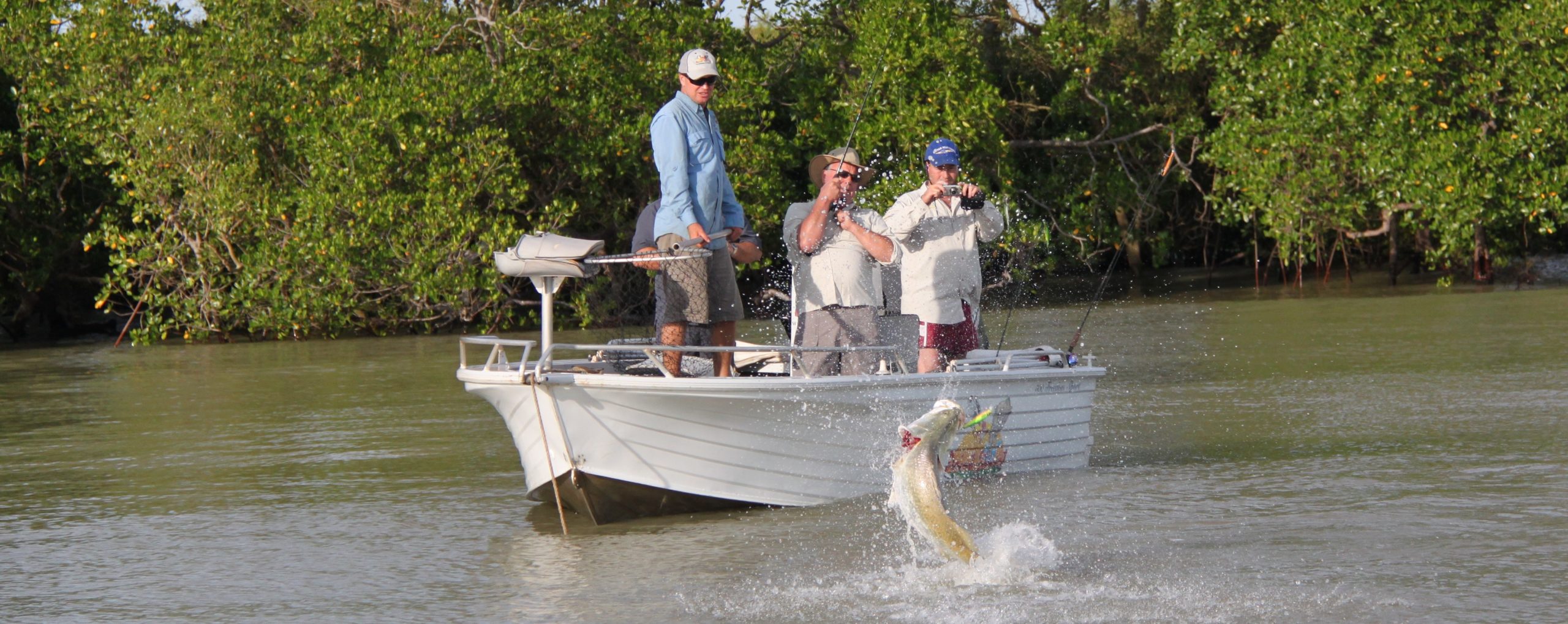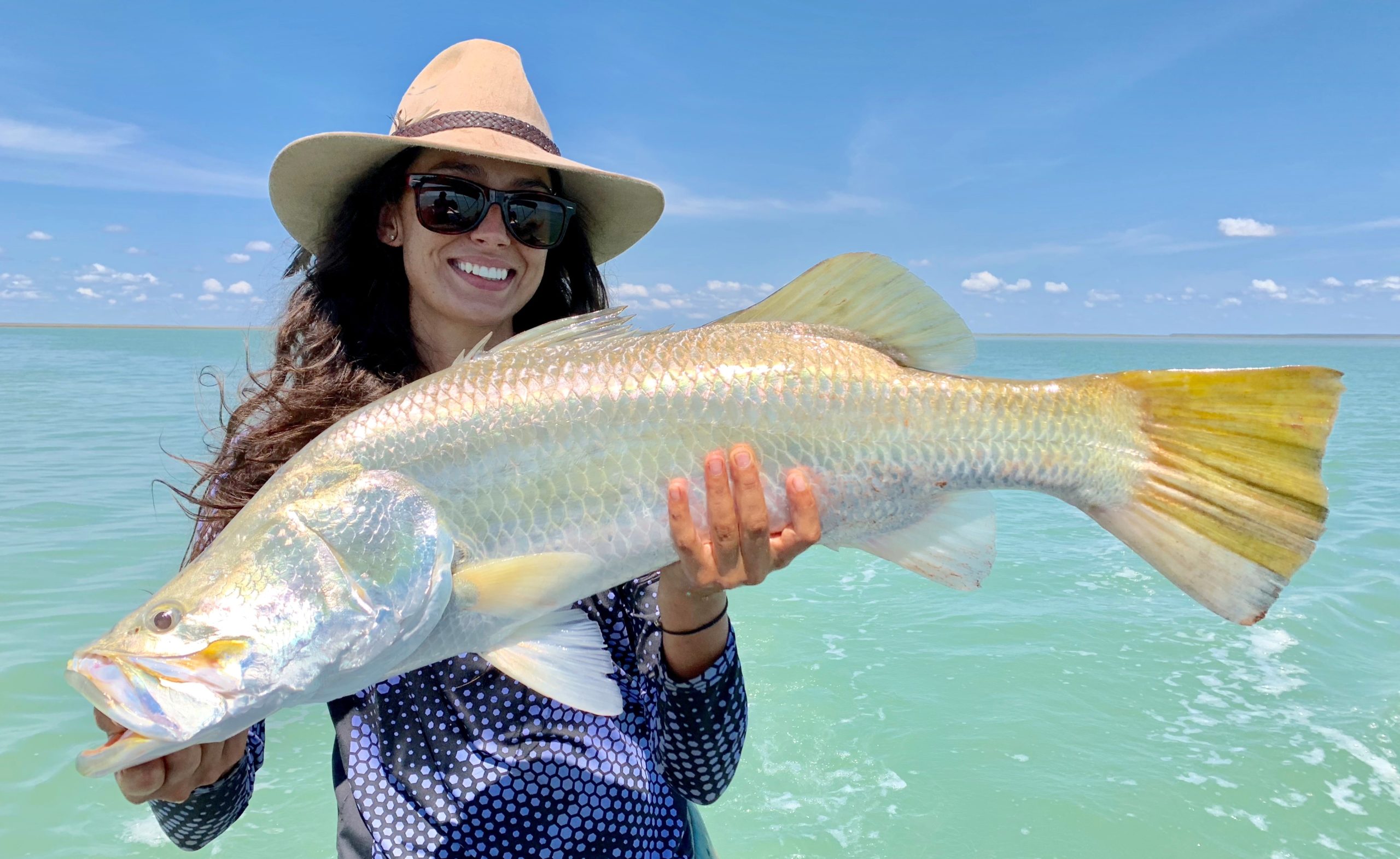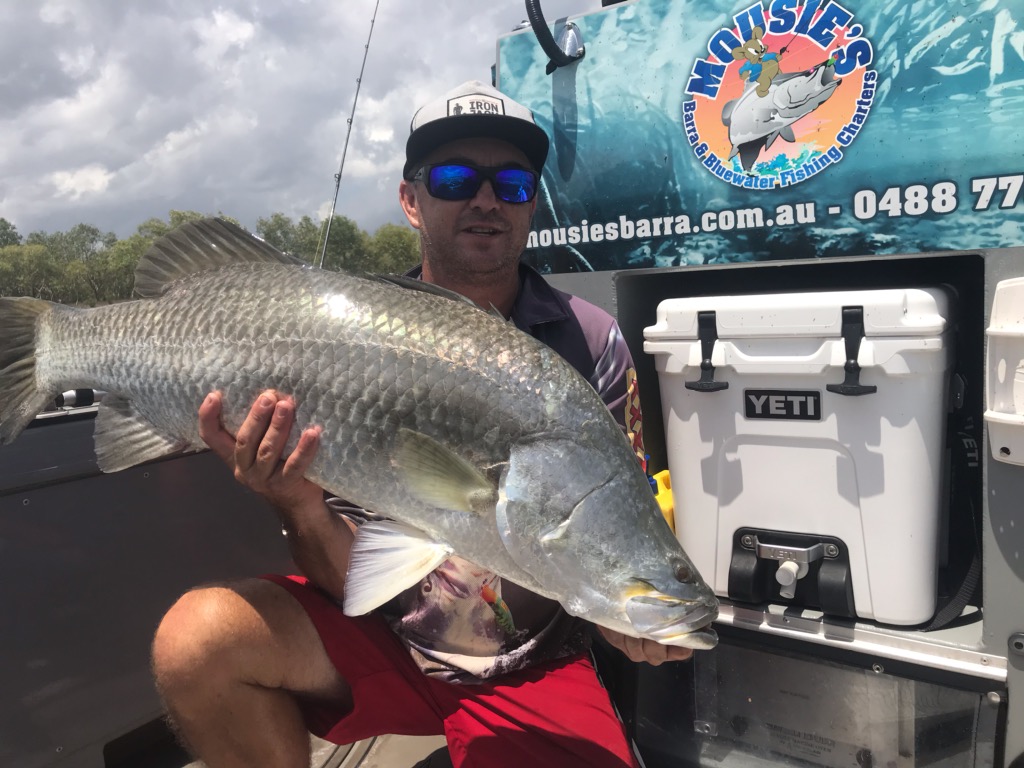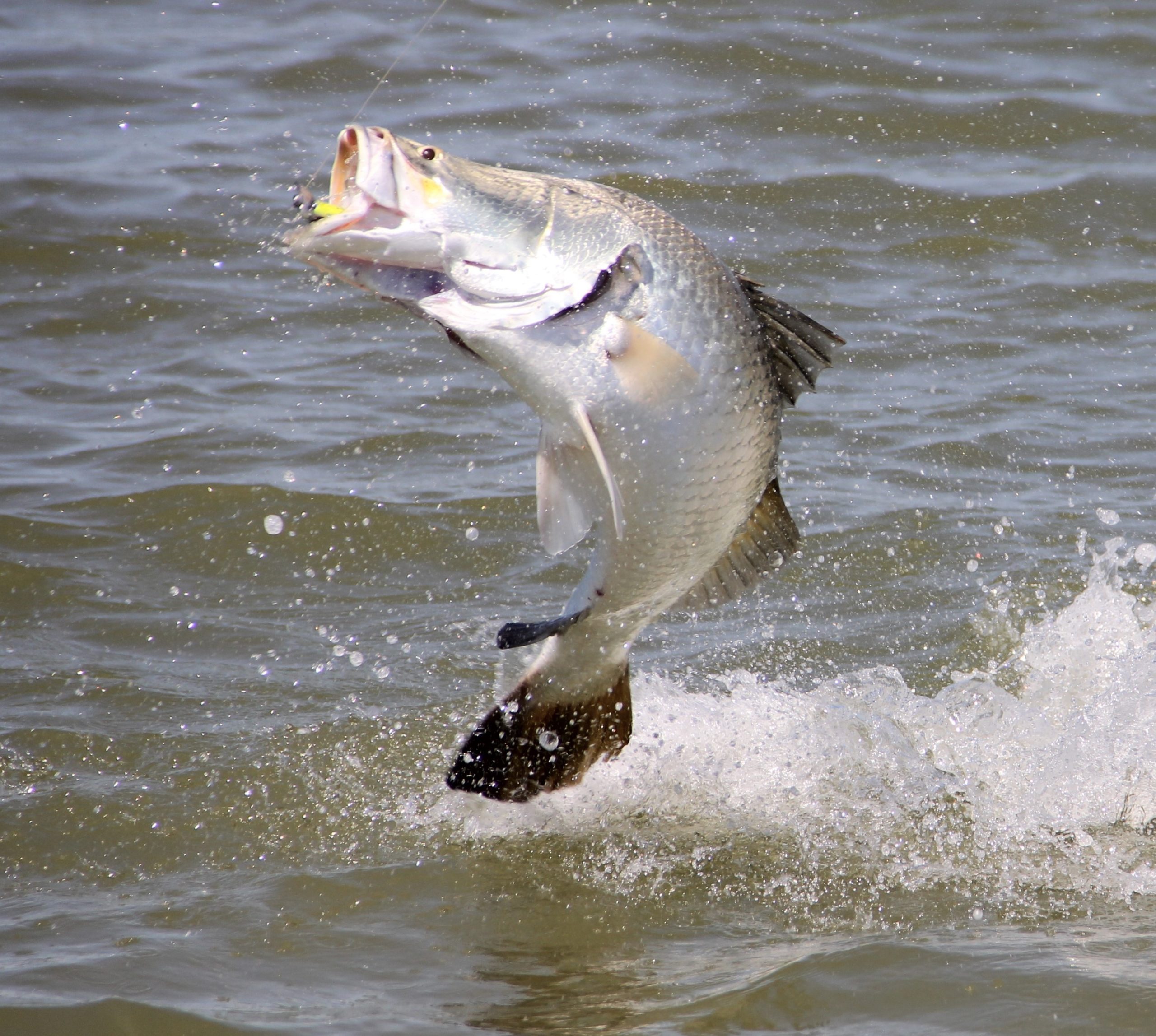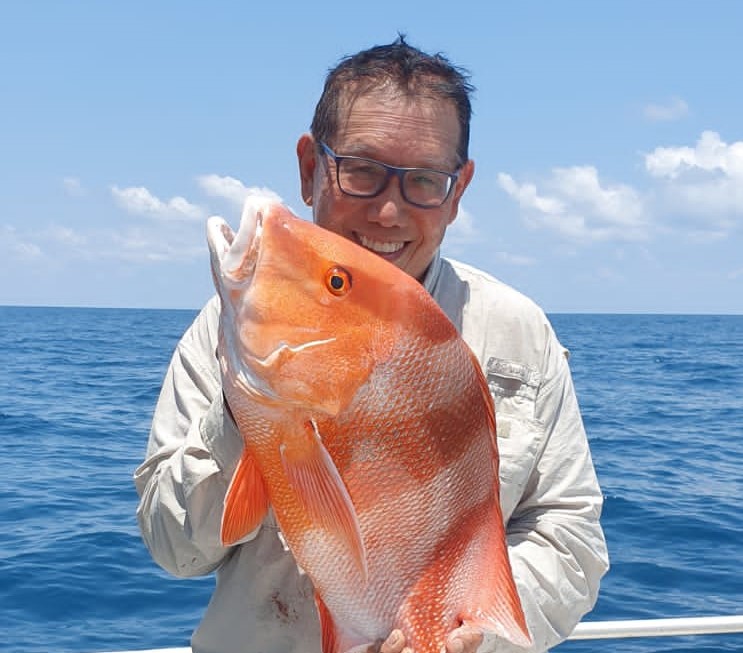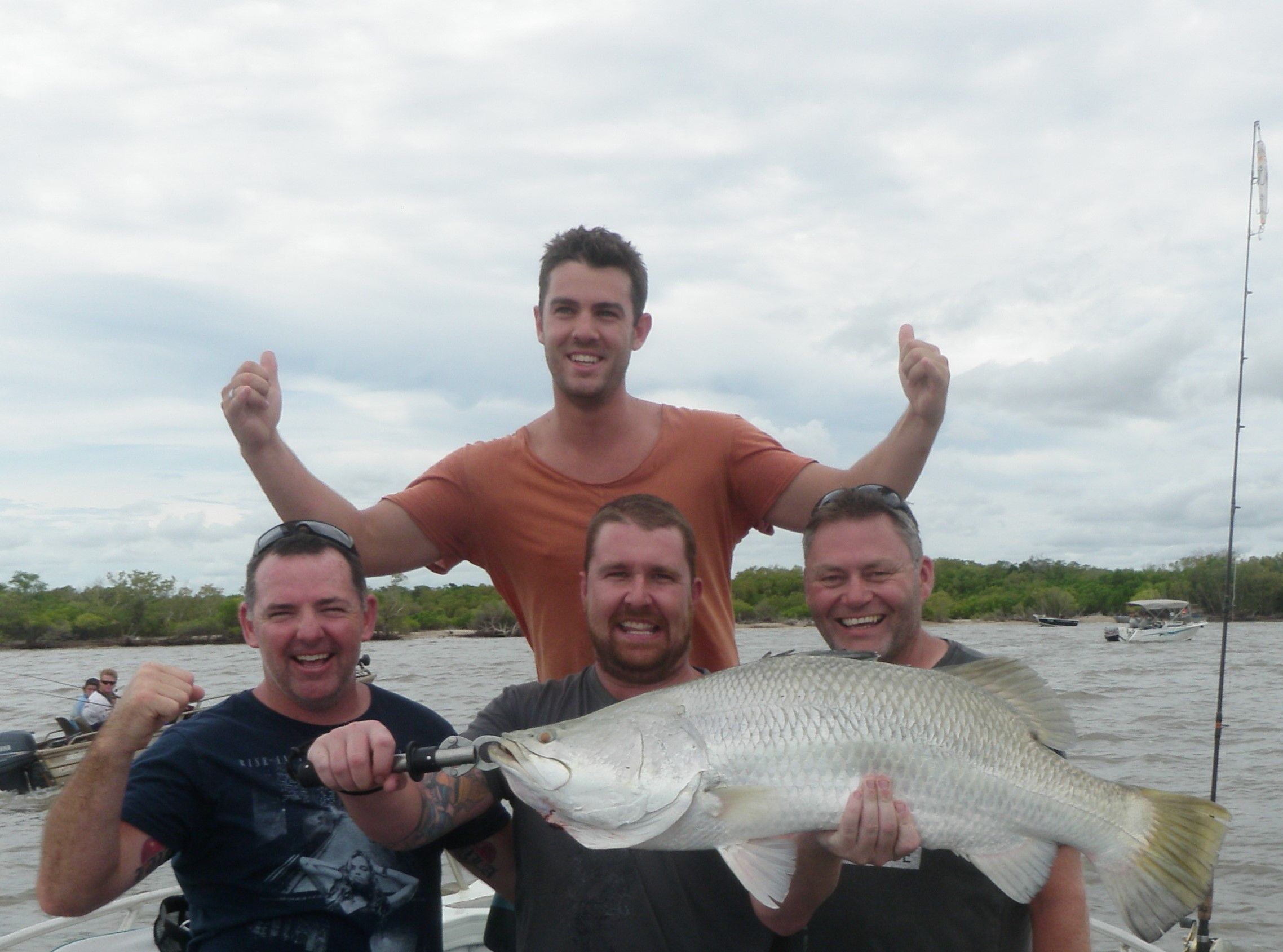Brian Hutchinson and his wife Di set up Estuary Escapes Fishing Charters in August 2019. Originally from New South Wales, Brian first visited the Top End in the late 1990s, and immediately wanted to set up a fishing tour business there. With more than 20 years of guiding experience, he finally convinced Di to escape to Darwin, to offer both half- or full-day trips on the water for anglers of all levels. Here, Brian divulges a bait box full of tips and tricks for how to catch an iconic barra.
Which fishing season is your favourite?
I’m a fishing tragic and fish all the time. I’d fish in a car park if someone could fill a big enough bucket. I grew up in Nowra, on the coast of New South Wales, and caught my first fish with a little handline when I was about two. I was so excited and I’ve been hooked ever since.
Where’s your favourite fishing spot in the Territory?
My top spot is anywhere. Did I mention I love fishing? If I had to pick, I’d say one of the best places I’ve cast my line is the Cobourg Peninsula, about 350km east of Darwin. It’s really remote and heading out there is like frontier stuff. Going off would be an understatement, what with a large abundance of giant trevally, Spanish mackerel, queen fish, long tail tuna and barra, of course. It’s magic there. You barely get the plastic to the bottom before getting a hit or a hook-up.
Why do you think so many people come to the Territory to chase barra?
There’s less pressure up here. It’s so laidback – where else do you get to wear t-shirts, shorts and thongs and not get judged for it? You also get the chance to bag a barra in the wild. Over in Queensland the dams are well stocked with barra, but nothing beats battling boggy dirt tracks and flooded roads to iconic Territory destinations to chase a barra or two. Barra are cloaked in the mystery of the remote Top End of Australia, the great unknown, and represent escaping big city life and replacing it with a fun fishing life.
What’s your go-to fishing hack?
Keep an eye on your sounder. It tells you what’s happening under water and, more importantly, where the fish are. It doesn’t matter who you are or how good an angler you are, your sounder is your best mate!
What’s your most memorable catch?
A 120cm barra. It’s the biggest beast I’ve ever caught. I won’t reveal where. I was out on my own but I think I have a picture somewhere to prove it. There is no better feeling than working a lure and having it inhaled by a big fish. The strike is sudden and aggressive, and so much fun. I like the challenge of a fish that puts up a fight.
What’s your bucket-list fish?
Now I’ve ticked the metery barra off my list, I’m all about the bass (50cm plus) and a one-metre plus Murray cod.
What Million Dollar Fish product are you offering for Season 6?
Catch a tagged Million Dollar Fish on one of our tours during the competition and you’re in line to win a half-day escape for you and a mate. Our boat was built specifically to target barra and other estuary sports fish, so your chances are good.
When’s a good time to come to the Territory to catch barra?
As the weather warms and humidity rises during the build-up, the barra become more active and for longer periods. The tides get bigger, providing the perfect opportunity to target the fish as they come back into the river mouth. The runoff, around March-April, is the barra fisho’s dream time, when the floodplains run off into the main river systems. The bait is forced out into the hungry mouths of barra, making hunting for them much easier. Having said that, people have caught barra anytime really, including the height of the wet season during December and January.
What’s your top tip for visiting fishos?
Go with a guide first up. There are five regions in the Territory where the tagged fish have been released. If you don’t know where you’re going, you could end up disappointed and frustrated searching for the best waterway. A good guide will take you to all the top spots, so you can get on with the important business of fishing, and catching that elusive metery.
